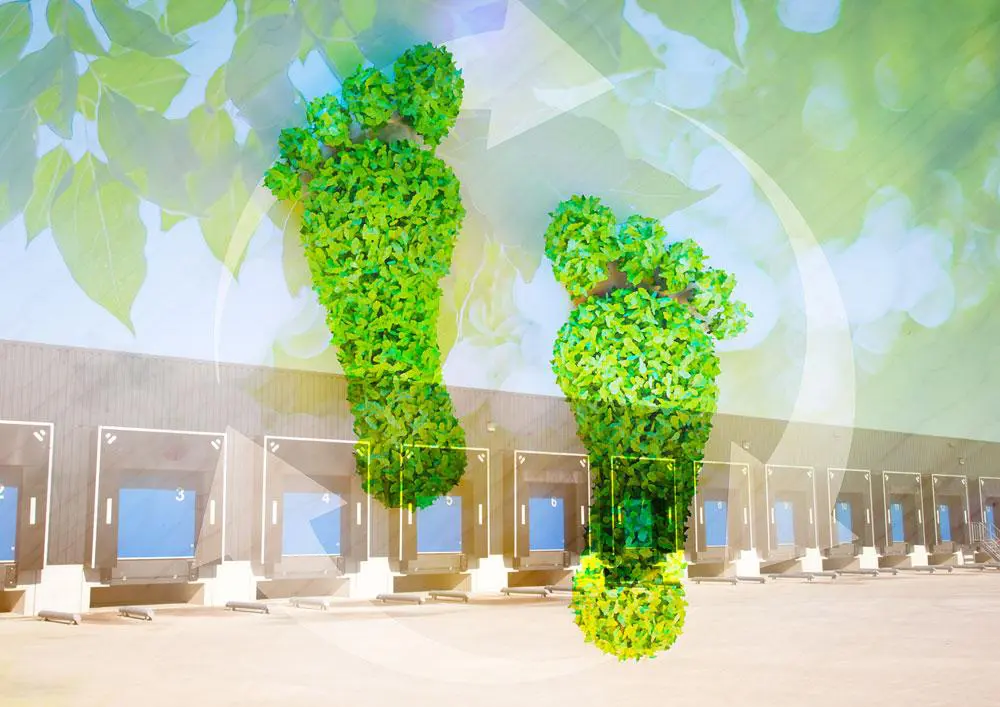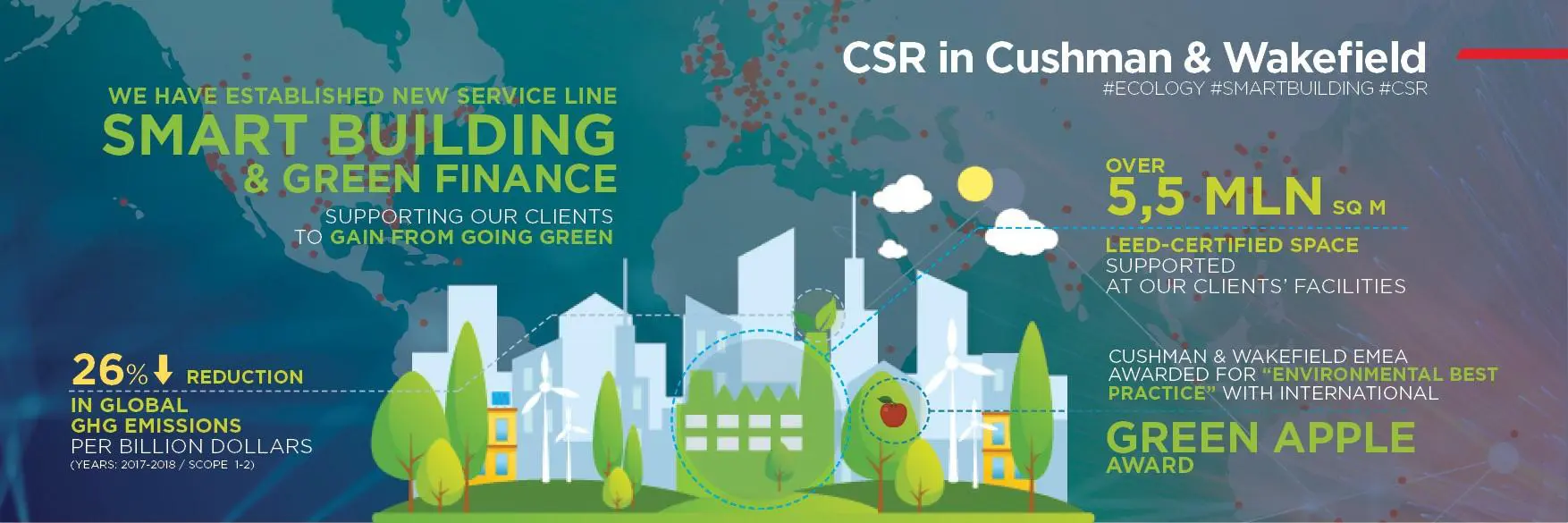CSR in logistics. Why is it worth to invest in green warehouses?
02 september 2019

Contents
Formal certification that an industrial facility has been constructed using sustainable solutions has the form of so-called green certificates, which are intended to promote and implement good practice in green construction. Currently, there are two actual systems of green certification for industrial facilities: BREEAM and LEED. The popularity of the two certificates results from their international range – they are commonly used not only in Poland but also in other countries.
Eco-warehouses warehouses - why is it worth?
Certification of warehouse buildings in Poland is still not a regular occurrence, unlike, for instance, in the office market. However, over time, both the tenants and owners of industrial facilities recognise the positive aspects related to environmental verification. The importance of certified quality of the facilities keeps growing. This phenomenon is also caused by the changing market conditions. With increasing frequency, tenants look for dedicated buildings, customised to the tenant’s demands, which are often very specific. The average duration of tenancy agreements also keeps extending, which means that the user will have sufficient time to see the actual savings on operating costs resulting from the quality of the building. Streamlining of operating costs can provide a genuine competitive edge. Matters related to reputation and marketing opportunities are significant as well. One of the tenants that consider environmental matters when constructing their buildings is Amazon:
We make sure that our buildings conform to environmental requirements already during the planning stage. Amazon e-commerce logistics centres are built with BREEAM certification with the “very good” rating. We care, for instance, about suitable waste management during construction or use of a wide range of local plant species in order to make sure that the building blends in with the natural environment. Our centres are also provided with smart building management systems, LED lighting or motion sensors. Amazon facilities are also characterised by high airtightness, insulation rating of the walls and roofs and systems for maximum reduction of water use - says Marta Rzetelska, PR Manager Amazon Poland.
The topic of sustainable solutions comes up in virtually every large project implemented using the pre-let formula, and it is usually thoroughly discussed already during negotiations of the contract. The challenges still include the cost of such solutions, despite the fact that the tenants are aware that sustainable buildings provide specific benefits and lower operating costs. That is why the extra costs related to the use of non-standard, sustainable solutions are usually accepted by companies that sign tenancy agreements for a longer period. Tenants who decide on a 3- or 5-year lease, in turn, usually do not choose to pay extra.
In some cases, help comes from the property developer itself – which shares or completely covers the cost of some of the investments in sustainable solutions. The decision on the scale of such investments depends on whether the particular solution increases the value of the building. Benefits to reputation, however, are also not insignificant.
More and more eco-warehouses in Poland
It is very encouraging that the number of certified buildings, including multi-tenant buildings, is growing. BREEAM-rated buildings are increasingly often constructed by large market players, such as Panattoni, Segro or 7R. It is very likely that, in a few years, certification will become not just a market standard but an actual market requirement – imposed by the users and final owners of the buildings.
Today, there are only approximately 100 industrial facilities in Poland with BREAAM and LEED certificates, and the best of them have been rated “very good” according to the BREEAM system. The best result so far, i.e. 63.9%, was achieved by a building constructed as part of the Segro Logistics Park Warsaw Nadarzyn. For comparison, the highest ever BREEAM rating, i.e. 98.48%, was achieved by the “New Logic III” building, which was a property of the Rhenus logistics company in the Dutch city of Tilburg. This means that we are still waiting in Poland for industrial facilities that receive the highest ratings, i.e. excellent and outstanding (BREEAM).
How to construct a sustainable warehouse?
What should be considered when designing and constructing an industrial facility in order to maximise its energy performance?
-
Solutions designed to reduce energy consumption
Significant factors include the location itself as well as the shape of the building, its placement on the plot, location of offices, insulation rating of exterior walls and roof, adjustment of daylight admittance level to the warehouse processes, use of advanced lighting systems (smart LED fittings controlled by the DALI system to enable lighting management) and use of energy recovery systems. -
Maximum use of renewable energy sources
For instance, by using solar energy in passive and active heating systems, in solutions involving the use of daylighting and electrical systems with photovoltaic cells. -
Efficient use of fossil fuels
For instance, by using heat pumps or reducing the length of heating and ventilation lines. - Other solutions:
- Suitable waste management during the construction and operation of the facility (monitoring, segregation and recovery).
- Use of software to enable comprehensive facility management, including functions such as remote automatic notification of the user about any faults of equipment used in the facility to enable immediate response.
- Preparation of suitable parking infrastructure for people who arrive on bikes or in a single car using car sharing and proximity of public transport stops.
- Suitable arrangement of the surroundings of the buildings, including, in particular, soft-landscaped areas.
- Use of rainwater or grey water.
Ecological Warehouse Certificates
BREEAM (Building Research Establishment Environmental Assessment Methodology) is based on the UK system, and it is used both for new and existing facilities. The assessment is carried out in 9 categories, 6 of which include critical items, which have to be met in order for the project to be accepted. BREEAM assesses the efficiency of the buildings in categories such as the following: management, energy, health and wellbeing, pollution, transport, land use and ecology, materials and water.
During certification, the facility can receive one of the following five ratings: pass (30–44 percent), good (45–54 percent), very good (55–74 percent), excellent (75–84 percent), outstanding (85 percent or more).
LEED (Leadership in Energy and Environmental Creative design) is a US system that involves buildings certification in eight categories, which vary depending on the type of the building and the construction stage. In LEED certification, the assessment is done based on the five primary criteria: sustainable sites, water efficiency, energy and atmosphere, materials and resources and indoor environmental quality. 4 types of certificates can be obtained in the process: certified facility (40–49 points), silver facility (50–59 points), gold facility (60–79 points) and platinum facility (80 points or more).



